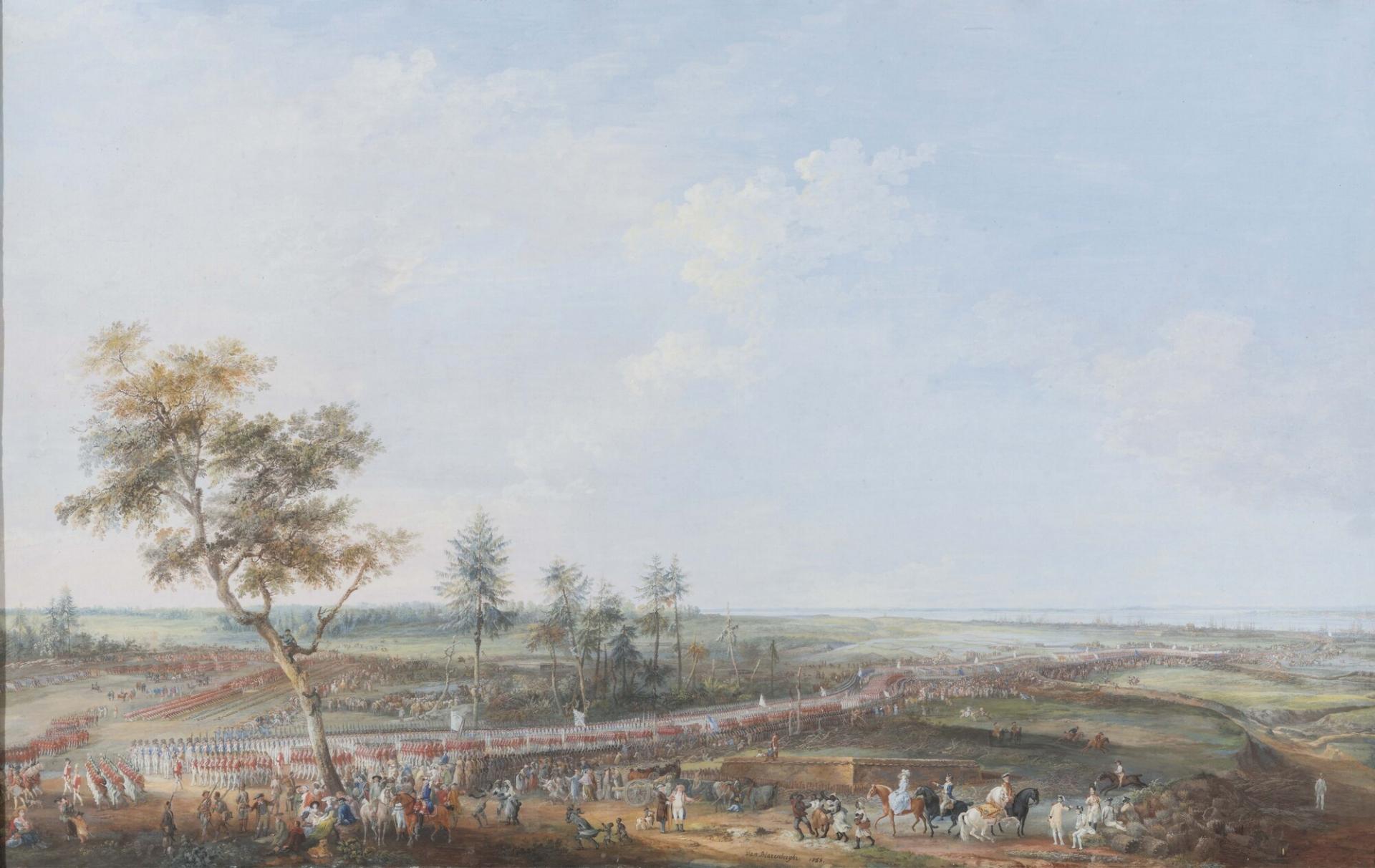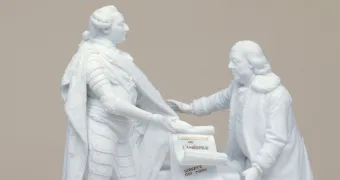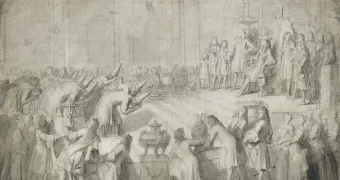The Palace of Versailles has always had close ties with the history of the United States of America. It was at Versailles that the decision was made to recognise the United States of America as a nation in 1777. It was at Versailles that Benjamin Franklin was received in 1778 by Louis XVI who granted him the military assistance that led to the signature of the Treaty of Independence of the United States of America in 1783.

Versailles and the United States of America, 1778-1783
The history
Ever since the disastrous Treaty of Paris in 1763, which notably entailed the loss of Canada and the Indies, France had been seeking revenge against England. The American War of Independence led by the English colonies in America, was the perfect opportunity to do so, and on 4 July 1776 the colonies unilaterally declared their independence.
War broke out with England, which set out to crush the rebellion. Despite some early success the insurgents, led by General Washington, soon needed serious military support.

George Washington, by Charles-Willson Peale
© château de Versailles / Christophe Fouin
An answer was given by General La Fayette, who had arrived in America to support their cause in June 1777. Having become a close friend of Washington - his brilliant successes on the battlefield had earned Washington’s confidence - he succeeded in persuading the American Congress to send a delegation to Versailles.

Marie-Joseph-Yves Gilbert du Mortier, marquis de la Fayette,
by Louis-Léopold Boilly
© château de Versailles, Christophe Fouin
ANECDOTE
Benjamin Franklin and his friends’ simplicity won over not only the French diplomats, but also the hearts of the French people. They were hero-worshipped in Paris and Versailles.
Benjamin Franklin in Versailles
On 3 December 1776 three American plenipotentiaries arrived in France: the renowned statesman and physicist Benjamin Franklin and the diplomats Silas Deane and Arthur Lee.

Benjamin Franklin, by George-Peter-Alexander Healy
© château de Versailles / Dist. RMN / Hervé Lewandowski
The official reception was held at Versailles on 21 March 1778, although a treaty of alliance had already been negotiated with the Count of Vergennes, the Minister of Foreign Affairs, and had been signed on 6 February 1778. This treaty marked France’s entry into the war against England. The three men’s simplicity won over not only the French diplomats, but also the hearts of the French people. They were hero-worshipped in Paris and Versailles.
After waiting in the Oeil-de-Boeuf Room, Benjamin Franklin and his friends were introduced into the King's Great Chamber by the Count of Vergennes. Louis XVI presented them with a note of goodwill for the Congress.
Quote
"The King, a young and virtuous prince, has, I am persuaded, a pleasure in reflecting on the generous benevolence of the action in assisting oppressed people, and proposes it as a part of the glory of his reign. I think it right to increase this pleasure by our thankful acknowledgements, and that such an expression of gratitude is not only our duty, but our interest".
- Benjamin Franklin, about Louis XVI1
The story of the visit of B. Franklin
The king sent a considerable amount of military assistance in the form of 6,000 men under the command of Rochambeau. This assistance contributed to the defeat of the English at Yorktown on 17 October 1781.

Rochambeau receiving the surrender of British troops at Yorktown on 19 October 1781, by
Louis-Nicolas Van Blarenberghe
© château de Versailles, Christophe Fouin

Siege of Yorktown, 17 October 1781, by Auguste Couder
© château de Versailles
ANECDOTE
This huge painting (465x543), commissioned in 1835 and painted by Auguste Couder is currently in the Gallery of Battles at the Palace of Versailles!
The fate of England was sealed. The definitive Peace Treaty was signed in a hotel in Paris located at 56 Rue Jacob, on 3 September 1783.
Versailles and the United States of America... today
The history of Versailles continues to be closely linked with the history of the United States of America. Much later on, in the 20th century, the Palace of Versailles received the American philanthropist John D. Rockefeller who saw in Versailles a "national treasure of France” and decided to offer significant financial support.
To know more about it :
On 31 May 1961, French President Charles de Gaulle received in Paris two prestigious guests: John Fitzgerald Kennedy, 35th President of the USA, and his wife Jacqueline "Jackie" Kennedy. In addition dinner at the Elysée Palace, General de Gaulle decided to showcase French heritage during the diplomatic visit, and choose the Palace of Versailles for a magnificent evening, that held on 1 June...
Discover

Visitors' tales
Benjamin Franklin's visit to Versailles
Imagined from fragments and historcal testimonies, this tale recounts the visit of Benjamin Franklin to Versailles in 1778.

Visitors' tales
Mrs Thrale's visit to Versailles
Imagined from fragments and historical testimomies, discover the brillant Hester Thrale visiting teh court of Marie-Antoinette.

Visitors' tales
The audience of the siamese embassy
Imagined from fragments and historical testimonies, this tale recounts the siamese embassy's journey to meet Louis XIV in 1686.




